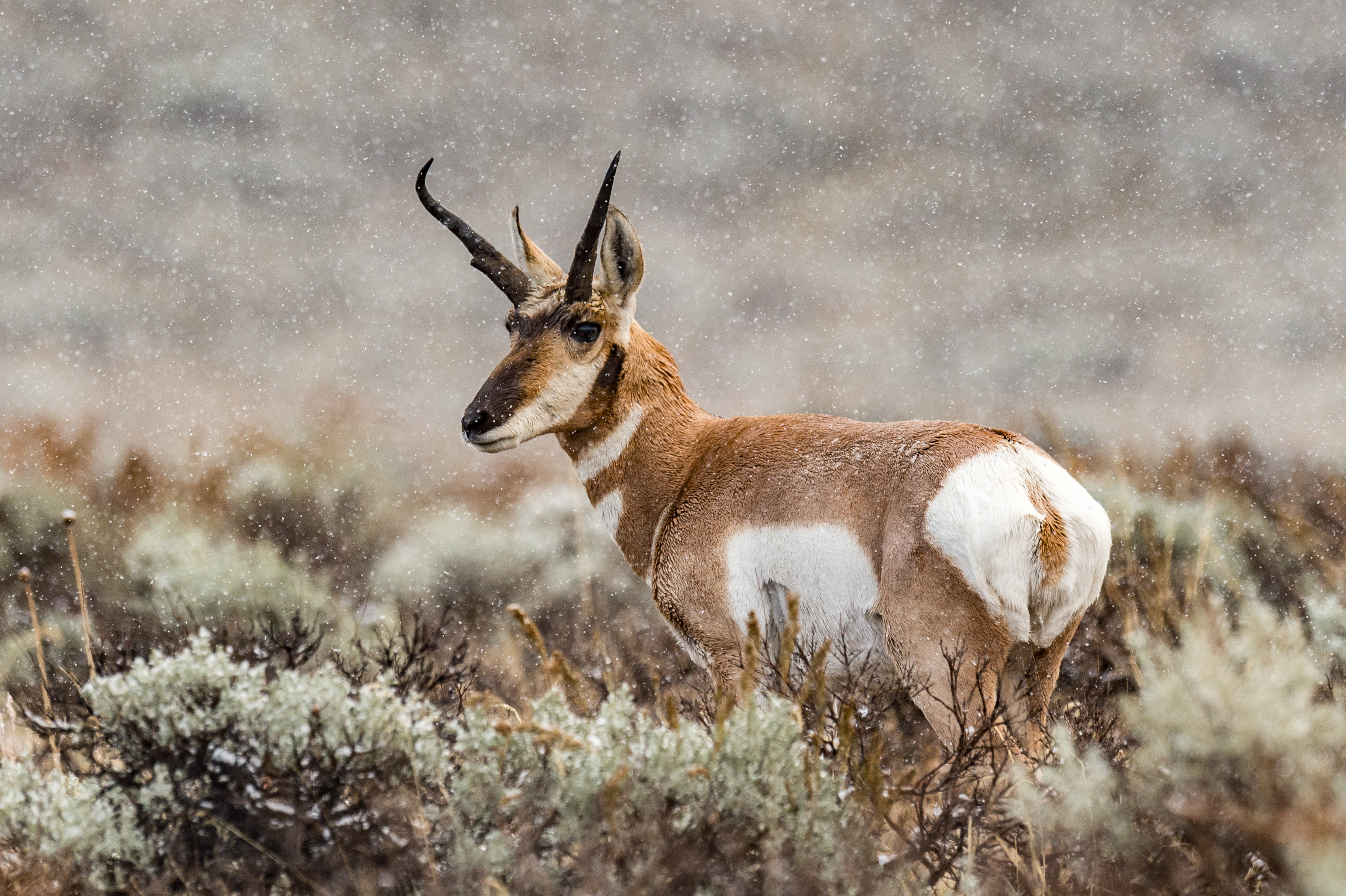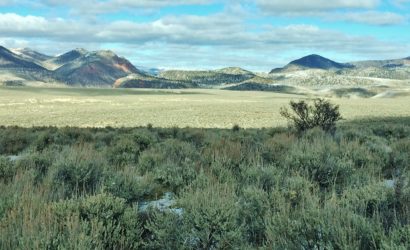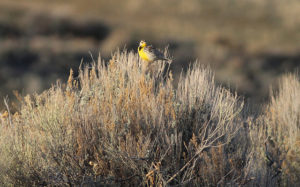We have much more to do and your continued support is needed now more than ever.
The Administration Leaves an Iconic Bird’s Fate Up in the Air

The fate of a one-of-a-kind bird that lives in a one-of-a-kind landscape is in limbo. So, why should anyone care?
There are more than 350 reasons why. That’s the number of animal and plant species that depend on America’s sagebrush lands. The greater sage-grouse, a chicken-sized bird with an elaborate courtship dance, once numbered 16 million. Now less than a half million are scattered across 11 Western states. The birds’ numbers have plummeted as their habitat has been paved over, degraded by non-native grasses, converted to croplands and fragmented by roads, pipelines and drill pads.

The loss of sagebrush also threatens the future of mule deer, pronghorns, elk, bighorn sheep, golden eagles, migrating songbirds and pygmy rabbits – more than 350 different species, 60 of which are already listed or are candidates for listing under the Endangered Species Act.
The greater sage-grouse nearly shared this same fate. In 2010, the U.S. Fish and Wildlife Service determined the bird warranted protection under the Endangered Species Act.
Saving the bird and the herds
Then two years ago, it looked like things were on track to save sage-grouse and at least some of the “sagebrush sea.” In 2015, the federal Bureau of Land Management and the U.S. Forest Service approved management plans for the public lands that provide almost half the birds’ remaining habitat. The plans had input from local and state governments, private landowners and ranchers, wildlife biologists, outdoor recreationists, sportsmen and women and others, including oil and gas industry representatives. The plans allow mining, oil and gas drilling, livestock grazing, recreation, hunting and fishing and other activities in sage-grouse habitat, with responsible safeguards. The plans helped convince the Fish and Wildlife Service that the bird wouldn’t need to be added to the endangered species list.
Now, years of hard work by Westerners and the future of the bird itself are in jeopardy as the current administration seeks to toss out these carefully crafted plans to accommodate accelerated energy development.
Over the holiday break, the Bureau of Land Management signaled where it might be headed when it quietly issued new guidelines for implementing the sage-grouse plans. These new instructions shift the focus from saving the bird to making it easier for private companies to mine and drill, even in vital sage-grouse habitat. They also eliminate requirements for informing the public of the impact of these activities on the birds and their habitat.
Neither the Bureau of Land Management nor the Forest Service has yet issued a final decision to re-write the plans themselves. Over 260,000 comments were submitted to the Bureau of Land Management on its proposal to open up its sage-grouse plans. The public has until Jan. 19 to send comments to the Forest Service.

Kate Zimmerman, the National Wildlife Federation’s public lands policy director, answers some questions about the plans.
Extractive industries, especially oil and gas companies, say the sage-grouse conservation plans will shut down energy development on public lands. Do the plans block energy development on public lands?
No, the plans do not close the public lands to energy development. They do set out best management practices for drilling in important sage-grouse habitat. These practices take advantage of new drilling technology that makes it possible to minimize the footprint of well pads and other surface disturbance. The plans also require federal land managers to prioritize issuing new leases and drill permits on the hundreds of millions of acres of public lands that don’t contain sage-grouse habitat.
Other critics don’t think the sage-grouse plans are protective enough. The National Wildlife Federation supports the plans as a compromise that, if implemented, should help save the bird. What concerns do you have with the current administration’s direction?
The plans represent a hard-won compromise. The Federation, for example, had raised concerns about whether some sage-grouse habitat should be placed entirely off-limits to oil and gas drilling. Given the hazards that land managers cannot yet control, such as wildfire and cheatgrass that destroys native vegetation, it’s important to fully address such activities as energy development. Only a small fraction of important sage-grouse habitat has a high potential for oil and gas development and 79 percent of the areas with medium to high potential for energy development falls outside of sage-grouse habitat.
However, the current administration’s new direction fails to recognize the effort to achieve a collaborative solution and needlessly risks the plan’s conservation goals. And we’re waiting to see whether Interior will open up the plans themselves to make big changes.

The Trump administration and other critics contend the sage-grouse plans are a one-size-fits-all solution imposed on the states. Is that a valid criticism?
The science on what the bird needs doesn’t change when you cross a state line. A conservation strategy should be based upon the best available science rather than arbitrary borders. Soft sagebrush leaves make up as much as 99 percent of the adult birds’ winter diet. Hens build their nests under the protective cover of sagebrush. Saving its sagebrush habitat is fundamental to saving the bird.
That said, states were at the table when the federal sage-grouse plans were drafted and the final plans reflect differences in state approaches. For example, Idaho wanted and got three levels of habitat protection while Wyoming adopted a two-tiered approach.

Will the sage-grouse plans prevent ranchers from grazing on public lands?
Nothing in the plans is intended to close public lands to sheep and cattle ranchers, but the the Federation has urged both the Bureau of Land Management and the Forest Service to clarify their guidance on grazing. The lack of clarity has led to significant but unnecessary misunderstandings that has ranchers worried they won’t be able to meet goals for rangeland health. Both agencies should explain that no lands are closed to grazing and that the health of individual parcels will be evaluated based on local conditions, such as precipitation levels and native vegetation.
Take Action Now





















